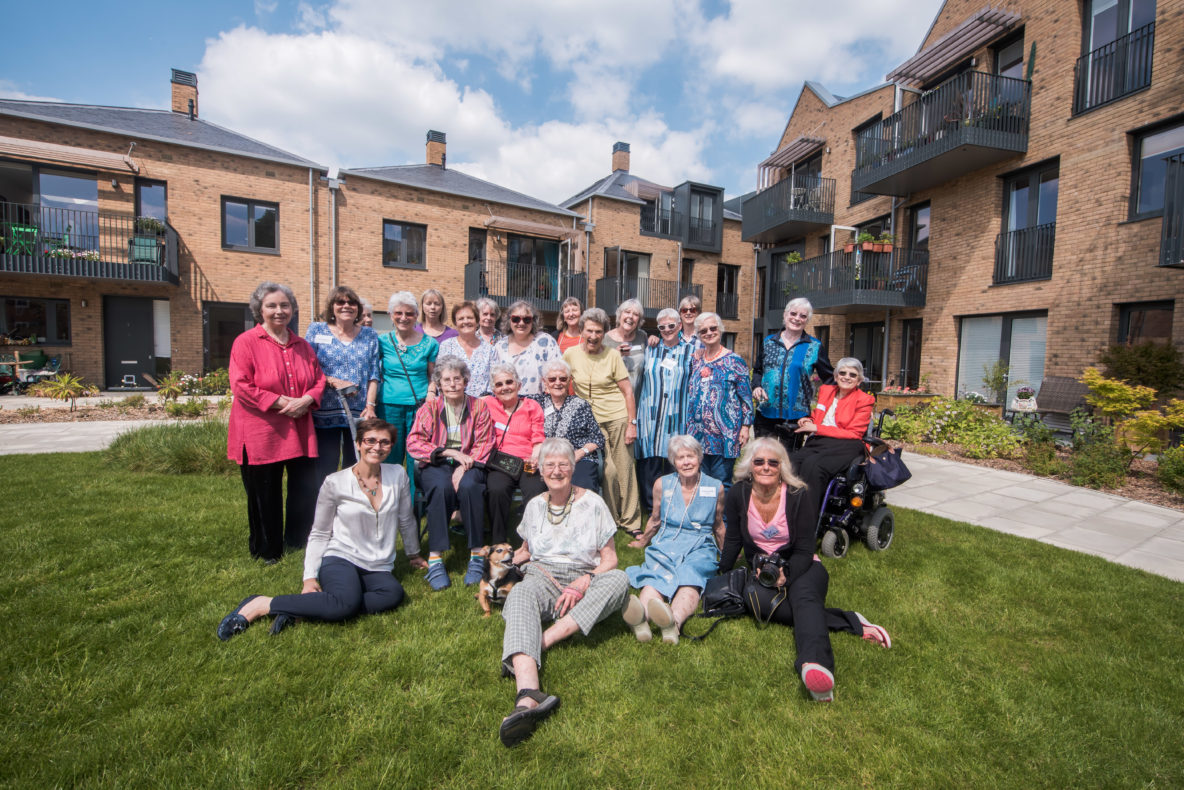Stories: New Ground
Cohousing for all: the story of New Ground in Barnet
A cohousing community of 26 women aged over 50, managing their own community and having control over their future. The Older Women’s Co-Housing (OWCH) did exactly this at New Ground, Barnet, the pioneering community for older women living as co-operative neighbours. Maria Brenton explains how over a 20-year period the co-op made its case and got the homes built.
By Hal Mellen, volunteer Planning Aid for London
New Ground is a cohousing community in Barnet, built and managed by 26 women aged over 50. Many of them lived alone before New Ground was developed, but cohousing has given them an opportunity to remain independent and healthy as they get older. The experiences of New Ground residents have recently become part of the evidence for the benefits of cohousing. The story of how Older Women’s Co-Housing (OWCH) brought New Ground into existence will be of interest to anyone wanting to build cohousing.
New Ground’s homes are a mixture of private housing on long leases and social rented homes managed by a housing association. All residents subscribe to the shared values and responsibilities of the group. Alongside enjoying their own accommodation, which allows for privacy and retreat, the co-op encourages residents to help manage shared facilities and activities. Responsibilities for property management, finance, procurement, communication, and memberships are dealt with by working groups, who report back to the wider group each month. The introduction of new policies or changes to the constitution are made by consensus-based decision-making to ensure that the group remains democratic.
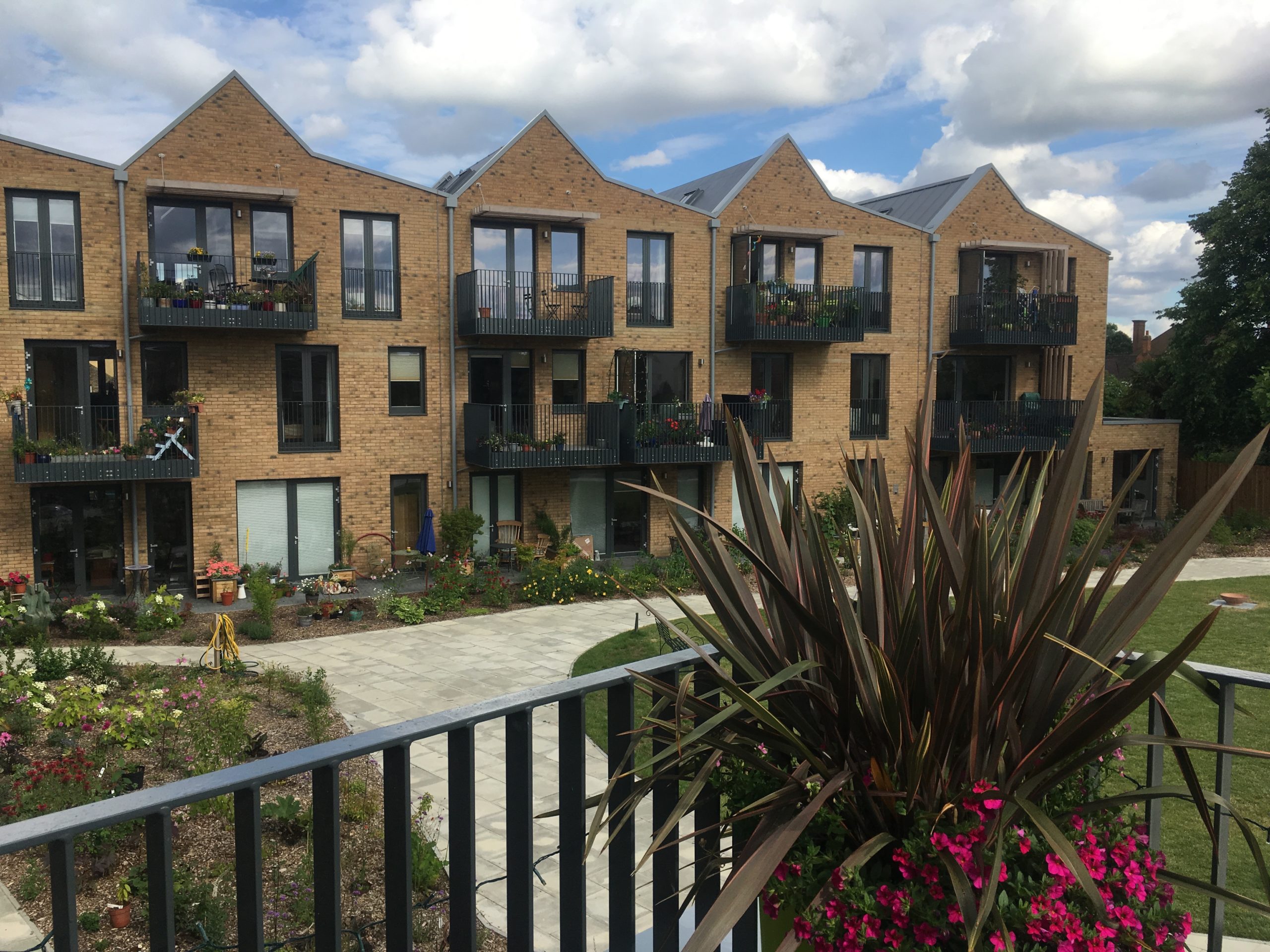
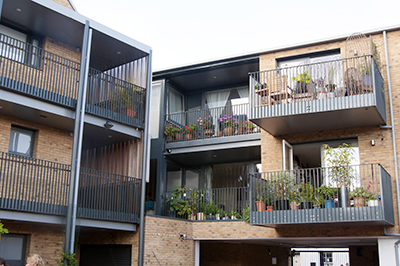
Setting up the co-op: the vision, the land, and the builder
Set up in 1998, OWCH came out of a cohousing workshop by expert and advocate Maria Brenton. The workshop was given to networks of older women in London and other interested parties. Maria’s emphasis on autonomy at an old age and independent living through cohousing struck a chord with the Older Feminist Network. This sparked an idea in the Older Feminists minds: “this is for us. Why don’t we do it?” Also present at the workshop was Housing for Women (HfW), a housing provider working to empower women and challenge inequality. Sharing the network’s enthusiasm, HfW agreed to support future residents to navigate the development sector and the right housing association.
Initially housing associations showed interest and met with OWCH regularly, but communications broke down over time. OWCH’s members felt that the housing associations lacked an understanding of how cohousing works because it was at odd with traditional housing models. They also faced a lot of red tape and regulations, which made partnering difficult. As Maria Brenton explains, “they don’t start with a group and build up with it. They build something and then find people to put in it.”
This continued for ten years. in 2009, at another workshop on cohousing for chief executives of UK housing associations, Maria met the then chief executive of Hanover Housing Association, Bruce Moore. Luckily, he had a personal interest in cohousing and saw the benefits of it, and so he agreed to find a location for the group. In a matter of months, a site was purchased. Hanover remained in partnership with OWCH until completion, and forward funded the development.
Negotiation planning permission and ideas of what cohousing is like
Finding a site and development partner for a cohousing project requires hard work and good fortune. But it’s only half of the battle. Before construction, planning permission must be granted. Knowing the relevant planning team for the local authority can help with this. As does connecting to other departments and actors that understand the benefits of cohousing. Up until the submission of plans, OWCH found working with local authorities difficult. They felt they gave out “incomprehension [regarding cohousing] and ageism – in that sense a paternalistic and rather negative approach to old people.”
Initially, the Local Authority thought that welcoming a group of older women might appear to increase strain on its social care budget. At first, They understood the proposal for the co-op to be akin to sheltered housing - i.e., planned for top-down care for senior and vulnerable people, who are not involved in the management of their community. However, Maria was able to persuade them otherwise. She met with the Local Authority’s Director of Adult Social Care and successfully clarified how cohousing differed from sheltered housing. Following receipt of a letter for the Director of Adult Social Care which reiterated this, the planning committee approved the plans for New Ground in 2013. Three years after the site was purchased, construction could finally begin
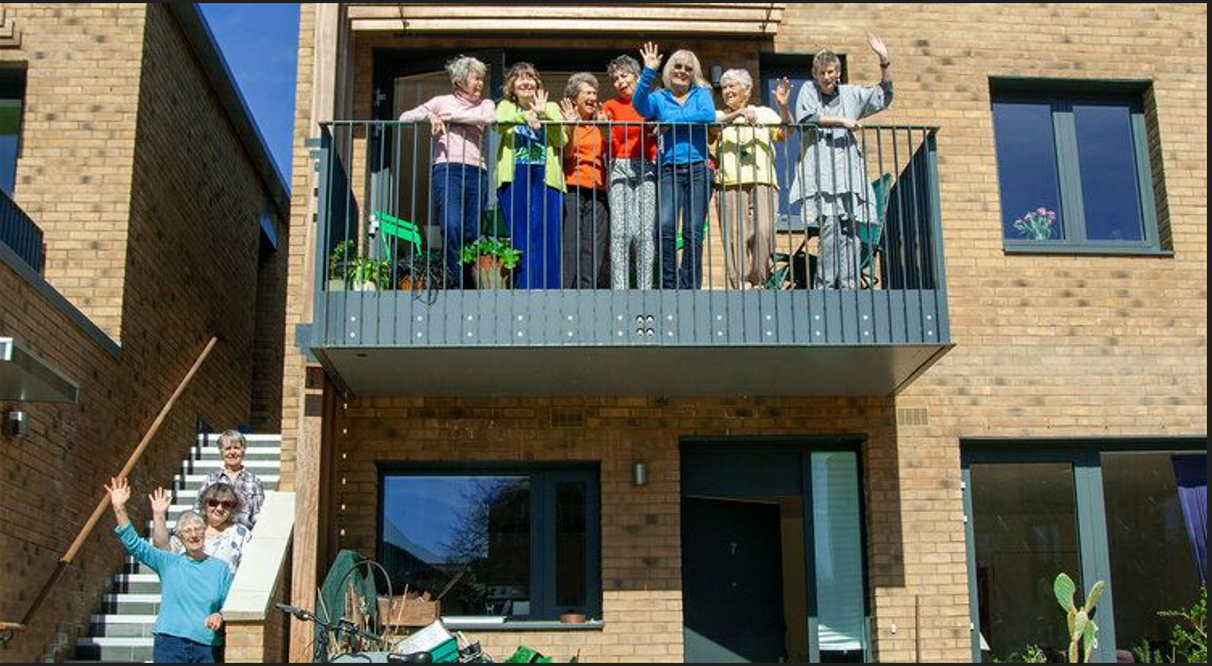
Women waving from one of the OWCH homes
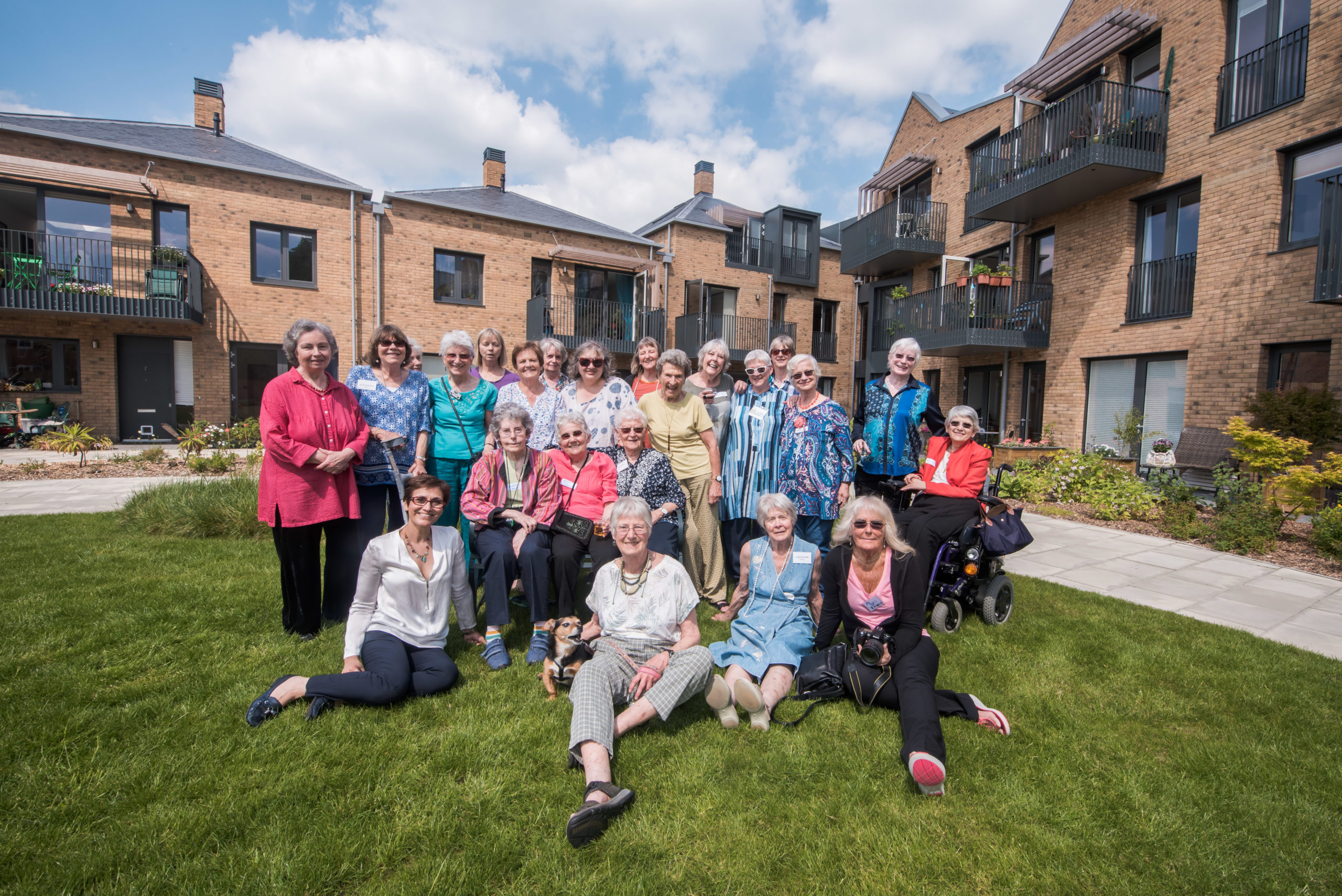
Lawn art for Haringey Learning Partnership (HLP)
What does success look like: finding allies and making friends
This project could not have been realised without allies – those who value and understand the benefits of cohousing. These connections relied on Maria’s consistent support throughout. Now, there are several cohousing hubs across the UK that advise and support prospective cohousing groups.
Projects like this are not successful overnight. Between the London’s Older Feminists decision for cohousing and their move into their new homes, this took 20 years. Many others would have lost faith, but to keep members interested, the group spent as long working on themselves and their relationships as they did on the project. Each meeting involved team building activities such as games and food sharing and they also had parties, trips away, and social meetups which help to boost morale and kept the project going. The strong relationships these women nurtured ensured they would thrive when living as a group. Since she moved into the development, one resident felt like she “been reborn” and that “[whilst] it’s late in life, it’s almost the best time of my life”[2].
New Ground has ultimately become what any co-op hopes to achieve: a community in which people can live a happy and fulfilling life.

